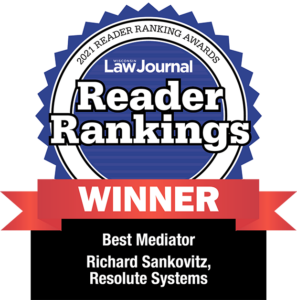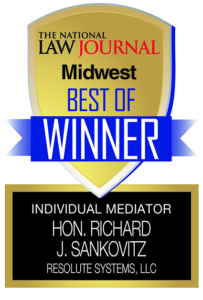Starting in 2019, Judge Sankovitz has presided over more than 400 mediations. The settlements he has brokered total more than $60 million in the aggregate.
The key to a satisfying and successful mediation is for each party to a dispute to understand well what the alternatives to settlement may be.
In 35 years on the bench and in practice, Judge Sankovitz has seen thousands of cases to conclusion. He has seen all the forces at play – compelling facts, legal and procedural advantages, skillful advocacy, thorough preparation, smoking guns, lucky breaks – and the reverse of all of these. Thousands of times he has witnessed litigants taking control of these variables and their disputes and designing solutions they will live with, through negotiated settlement.
In mediation, he puts to work his creativity and considerable experience in a wide variety of disputes to help litigants and lawyers on both sides of a dispute.
He achieves this by communicating clearly, identifying settlement opportunities and managing the process to maximize the likelihood of a mutually satisfying settlement.
What makes mediated settlements doubly satisfying is the high degree of confidence parties have that their settlements are truly final. Litigated resolutions aren’t final until the judgment has been enforced and the time to appeal has expired. By contrast, when parties to a mediation agree on a solution each can live with, each tends to live with it, and the dispute is truly over.
Judge Sankovitz has completed forty hours of training in two advanced mediation courses offered by the Pepperdine School of Law / Straus Institute for Dispute Resolution (Tracy Allen and Eric Gralton were his instructors) and the Association of Attorney-Mediators.
Principles That Guide Judge Sankovitz As A Mediator
Do judges make good mediators?
“Former judges can make poor mediators. Judges can get spoiled always having the last word, knowing that if they tire or grow impatient with the process they simply rule and the dispute is over – at least for the judge.”
Putting a judge’s experience to work...
“Former judges can make excellent mediators, though, if they put their experience with the litigation process to work in service to the mediation process – hearing the parties out and helping them hear out each other, helping them appreciate their litigation alternatives, kindling the settlement opportunities that develop, keeping the parties focused on the problem, not on personalities, preserving confidences, and above all modeling patience with the process.”



